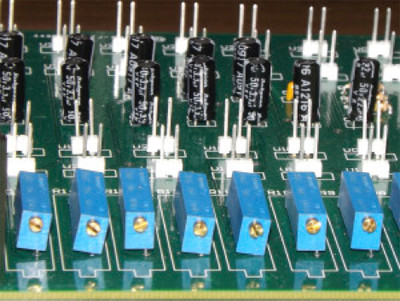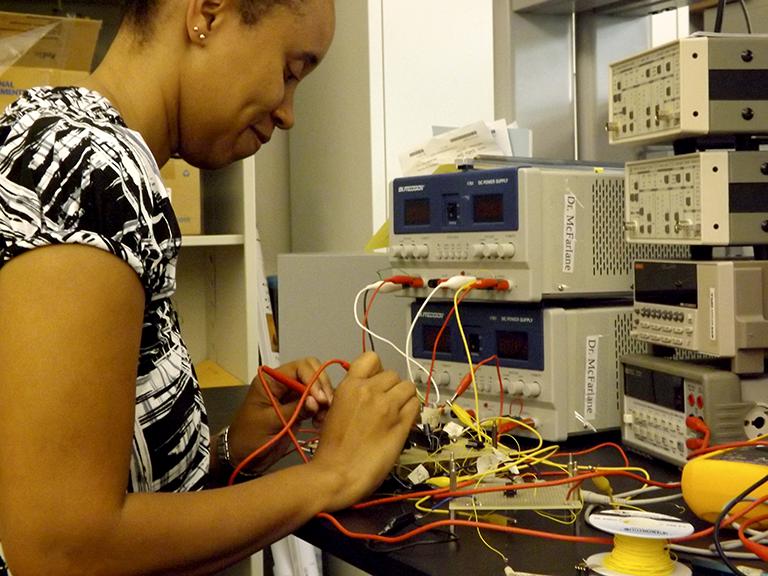Research Highlight: Nicole McFarlane
Downsizing Detection
In the more than 100 years since personal cameras became widespread, much has changed with this now ubiquitous piece of technology. Gone are the clunky wooden boxes mounted on tripods that sometimes required minutes of stillness from subjects. Cameras are now frequently small enough to fit inside a pocket with blinding shutter speeds and crystal clear resolution.
The goal of Dr. Nicole McFarlane’s JDRD team is to do something similar with the neutron detecting cameras currently in use at ORNL. Neutron detecting cameras detect the photons created when neutrons come into contact with a force that causes them to scatter.
Neutron detection is a popular imaging method used at ORNL for a variety of materials, from strands of DNA to chunks of rock. This imaging is currently performed with cameras that use Silicon Photomultiplier (SiPM) chips, which are large and expensive.

McFarlane’s team is working to design a prototype that will use Complimentary Metal-Oxide Semiconductor (CMOS) chips that will lead to smaller, less costly equipment. McFarlane’s prototype will be used to determine if the new technology will work as precisely and efficiently as the current SiPM chip equipment.
“This technology could have applications across a variety of fields, like geology, materials science and biology,” said McFarlane.

The team sent the first prototype out for fabrication in May to the MOSIS service, a company that aids in keeping the cost of fabrication down by creating multiple designs on one wafer, allowing McFarlane’s team to generate one prototype of their initial design.
They hope to complete testing on this initial chip in time to commission a second, updated prototype before the project reaches completion.